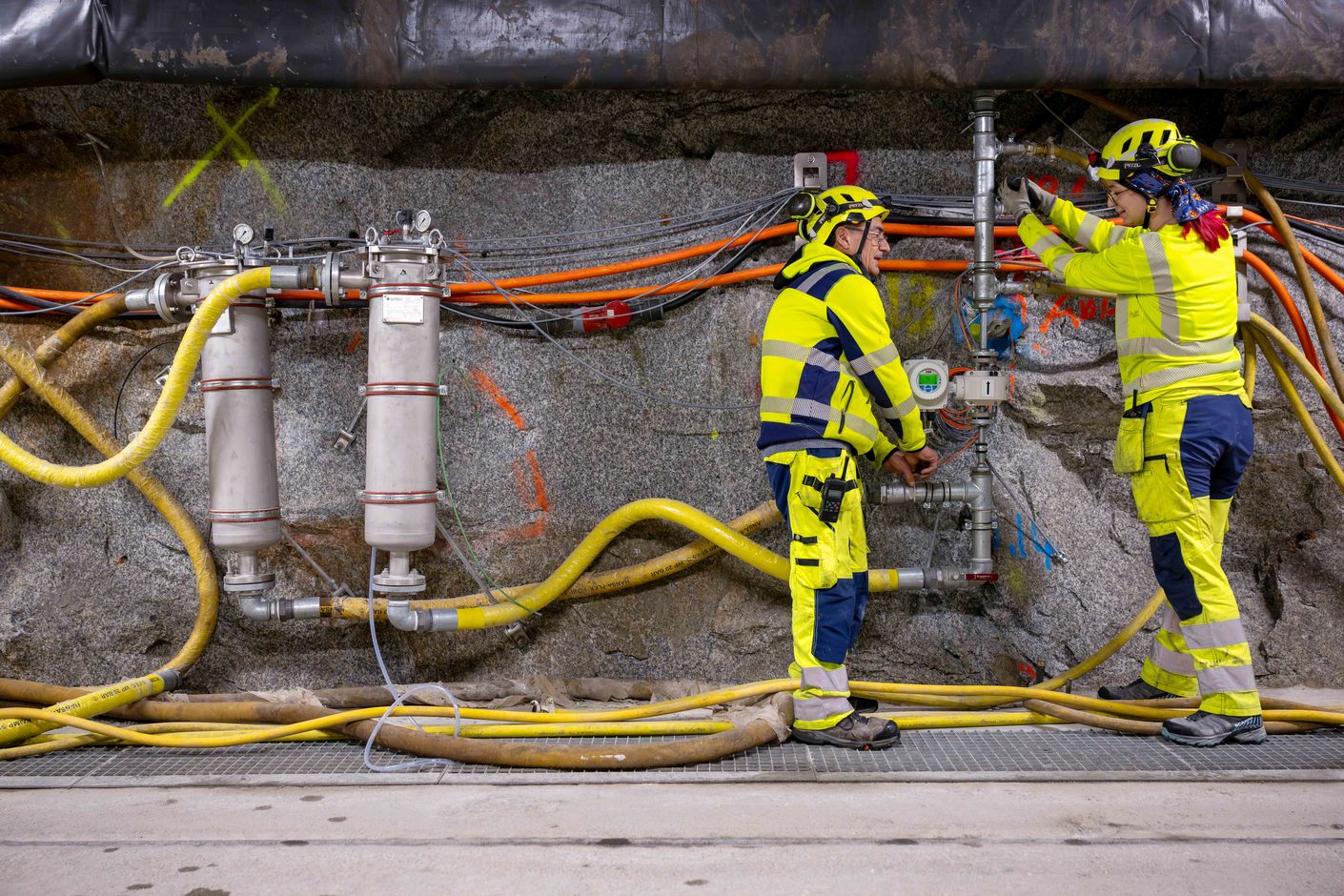
Fresh wind in the underground lab
The Bedretto Underground Lab is ready for the future: more research projects have commenced, new international collaborations are planned—and one innovative idea envisions a borehole of up to two kilometres beneath the tunnel ground that would significantly increase measurement capacities.
Located deep below the Saint-Gotthard Massif, the BedrettoLab—built with funding from the Werner Siemens Foundation—is an inexhaustible wellspring for ideas. The team in the underground facility for studying earthquakes and geothermal energy are currently working on several new approaches and technologies. As research leader Domenico Giardini from ETH Zurich says, “Thanks to the lab’s unique infrastructure, we’re constantly coming up with new ideas.”
Because all the experiments are conducted deep in the underground, safety is a critical feature at the BedrettoLab—and one of the team’s goals is to automate as many processes as possible. “That way, we can steer them from outside and no one has to be working in the tunnel,” Giardini explains. The project is on track: sensors, pumps and much more are now monitored and adjusted remotely.
New projects
This new capability will pay off in the recently launched BEACH project (Bedretto Energy Storage and Circulation of Geothermal Energy) that aims to realise underground energy storage: in summer, water is heated with excess solar power and injected into the subsurface rock, warming the surrounding layers, and in winter, energy from this heat reservoir is then available for use. To discover how well this principle works under different conditions in crystalline rock, the researchers are injecting various amounts of water at diverse pressures and temperatures. Using their new automation technology, they can monitor the parameters from outside the tunnel.
The same automation capacity is also an important element in the FEAR project (Fault Activation and Earthquake Rupture) which is currently in full operation. At present, a specialised firm is drilling a side tunnel of roughly one hundred and thirty metres along a large fault that will enable the researchers to generate controlled earthquakes in the fault zone and study the seismic activity at close range using a network of sensors. They’ve already triggered tens of thousands of microearthquakes with magnitudes ranging from minus five to zero and plan to induce more quakes with magnitudes from zero to one.
Observing earthquakes from below
An entirely new idea concerns the ability to measure seismic activity in the rock layers. “Till now, we’ve only been able to measure what happens directly around or above the boreholes,” Giardini explains. However, to get the big picture, the researchers also need to know what occurs below the borehole in the deeper regions. “That’s why we want to drill a borehole for measurement sensors that extends a distance of up to two kilometres below the tunnel ground,” he says.
However, the new borehole—that would angle down at a diagonal from the tunnel entrance—comes with a major drawback: its high price tag. The researchers are now compiling the calculations they need to submit a funding application. “If we can realise this project, we’ll be able to monitor and conduct experiments at depths of up to roughly three and a half kilometers below the surface.” Giardini explains. “It would be the first time this has ever been done.”
It’s a long-term project that would take several years, but the time is ripe: ETH Zurich is currently in talks with the Matterhorn-Gotthard Railway to secure permission to operate the underground lab for another ten years. “When that’s settled, the continued research and development in the tunnel is ensured for the years to come.” Giardini says.
International projects
Permission to use the tunnel is also critical for international collaborations, many of which are currently in progress—a sign of how great the interest in the lab is. Giardini relates that a ten-person delegation from China visited last summer, explaining that hundreds of kilometres of tunnels are being built for new train connections in the country’s western regions. “They’re drilling in large fault zones, where strong earthquakes can naturally occur—and China wants to use the opportunity to study earthquakes at the same time.”
The final project mentioned here is an official collaboration between ETH Zurich and the Helmholtz Association of German Research Centres, which is financing the construction of an underground lab in Germany—akin to the BedrettoLab—with a grant of several dozen million euros. “But unlike the Bedretto, which is located in an existing railway tunnel, this lab has to be built from scratch. It will take at least ten years,” Giardini says, adding that the collaboration will enable the German researchers to conduct experiments in the BedrettoLab beforehand.
“But it’s a win-win partnership that benefits our project, too,” Giardini says with evident satisfaction. “We’ll be able to confirm our tests with experiments conducted under other geological conditions in Germany. Or we can plan joint experiments, which lowers costs—and consolidates brain power.” There’s no doubt about it: a fresh breeze is blowing through the tunnel lab deep in the mountain.





